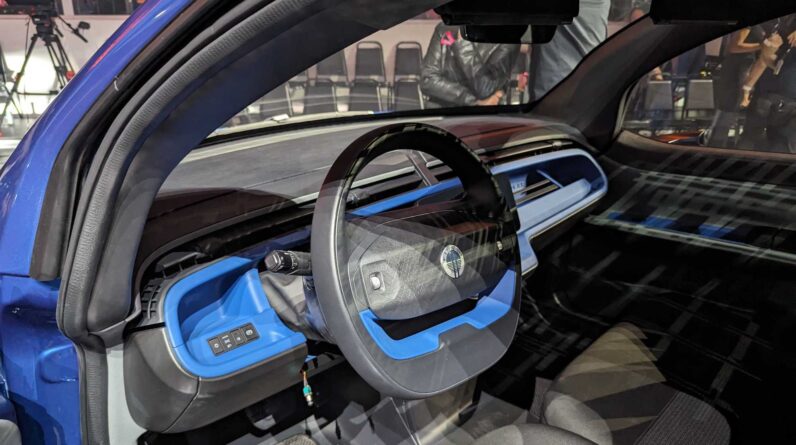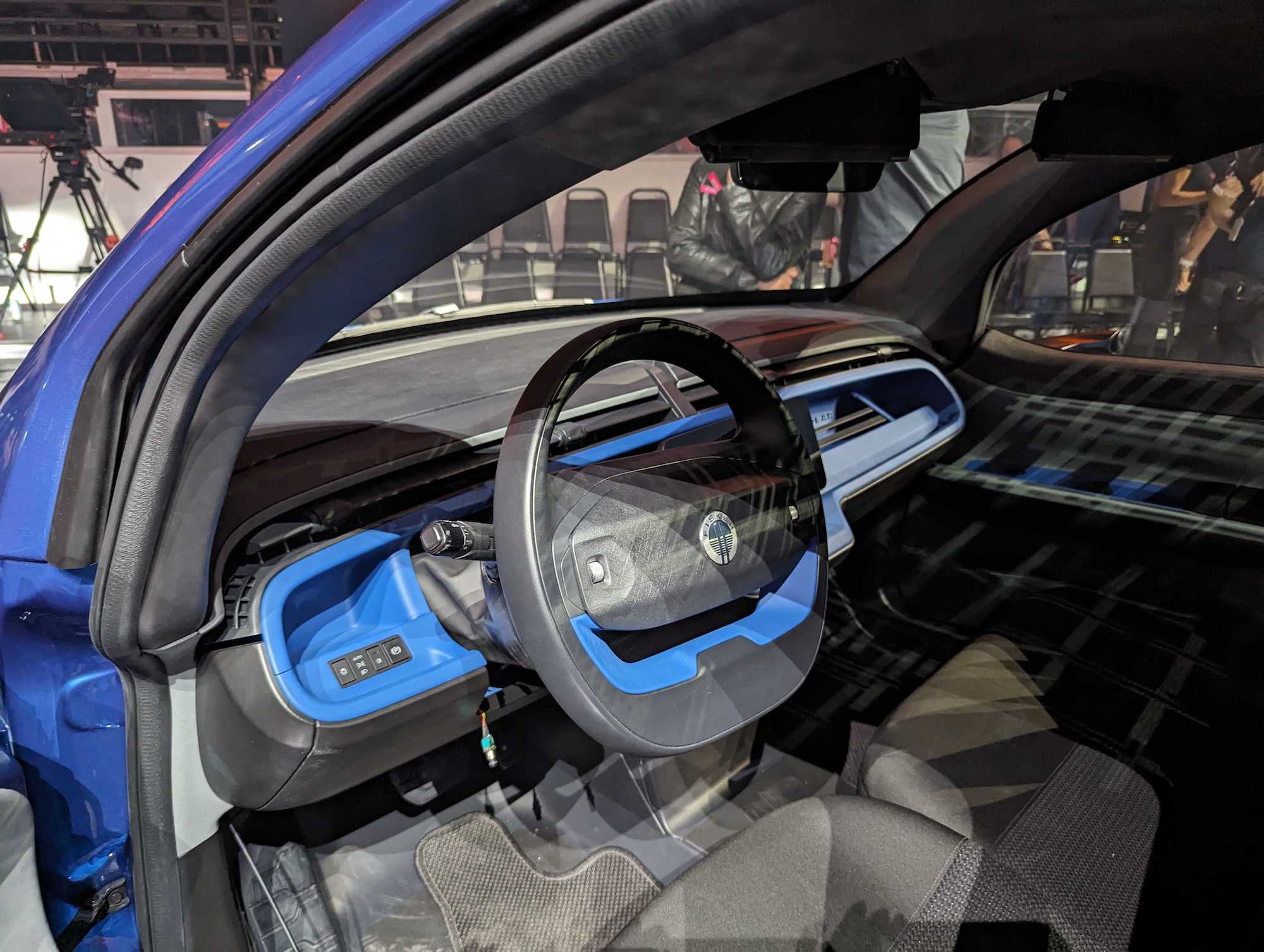
[ad_1]
Two years ago, EV startup Fisker seemed to have hooked a giant when it announced a deal with Taiwanese iPhone maker Foxconn to build a sub-$30,000 crossover in the United States. It turns out that deal hasn’t been finalized, according to comments Fisker founder and CEO Henrik Fisker made during an interview with TechCrunch.
“In the Foxconn deal specifically, we don’t yet have a final conclusion to this deal,” Fisker told TechCrunch on the sidelines of an event in Huntington Beach, California, to showcase its future EV portfolio.
While Henrik Fisker is still confident it will come together, his comments show just how precarious and complex automotive manufacturing deals can be. And considering Foxconn’s history of backing out of other factory agreements, there’s reason for some caution.
The Foxconn-Fisker deal
Foxconn and Fisker signed in February 2021 a memorandum of understanding agreement, with the goal of producing 250,000 vehicles annually. While it wasn’t clear which vehicle Fisker might build with Foxconn, the automaker had said that it was working on the Personal Automotive Electric Revolution (PEAR) — an EV built for cities and urban environments that would cost less than $30,000. The Fisker-Foxconn deal came together relatively quickly following the announcement of the memorandum, and by May 2021, Foxconn and Fisker had a signed agreement, setting those expectations in writing.
A few months later, Foxconn made a separate deal with EV maker Lordstown Motors that included buying its factory in Ohio and helping the struggling company manufacture its Endurance electric pickup truck. Fisker became a beneficiary of the deal when, in May 2022, the company announced it reached an agreement with Foxconn to build its PEAR EV at the Lordstown factory.
But cracks soon formed in Foxconn’s agreement with Lordstown Motors. Lordstown Motors filed for bankruptcy and has sued Foxconn for “fraudulent conduct,” stating that the Taiwanese company had made a litany of “broken promises.” Foxconn currently still owns the manufacturing plant in Lordstown, Ohio, and Fisker says that plans to build the PEAR in the Lordstown plant are still on track.
Foxconn is no stranger to scuttling done deals. The company withdrew from a $19.5 billion agreement with Indian company Vedanta last month. It also famously received a $3 billion incentives package to build a factory in Wisconsin that was supposed to create 13,000 jobs. The state ended up reducing incentives when Foxconn failed to deliver on its initial promises.
The PEAR-shaped question
Fisker still appears bullish on its PEAR vehicle and the prospects of finalizing its deal with Foxconn. On Thursday, Fisker revealed a finalized prototype of the PEAR, and executives said the company wants to eventually build up to 1 million PEAR vehicles, per year, at plants around the world, including those in the U.S., Europe, China and India. The company is even taking preorders for the Fisker PEAR.
According to a Fisker spokesperson, the ongoing suit between Foxconn and Lordstown Motors won’t prevent Fisker from building the PEAR in the Foxconn Lordstown plant at this point.
“For the PEAR, because we have this reduction of parts in the vehicle, we also need to change the assembly line slightly,” Henrik Fisker told TechCrunch. “The line is a different type of assembly, and the good news is that Foxconn doesn’t have much in that plant. So we need to set all this up. So that’s the discussion that’s going on.”
However, Henrik Fisker told TechCrunch there are some outstanding questions that both Foxconn and Fisker need to resolve.
“Part of it is that both parties want a lot more information,” Fisker said in an interview with TechCrunch. “So we need a little more information for some suppliers because, don’t forget, once you have a deal, somebody’s saying, that’s how much it costs to assemble it, and we’re saying okay, we agreed to that, right? So we’re still working on exchanging information and getting to, “This is how we’re going to do it,” Fisker continued.
The low-cost EV
It’s important to note that no other automaker has successfully created a sub-$30,000 EV yet.
GM tried with the $26,595 Bolt but reportedly lost a considerable amount of money on every Bolt sold. Hyundai has a couple of affordable EVs in their lineup, including the Ioniq 5 and 6, but both start in the mid-$40,000 range. Tesla killed off its never-existent sub-$30,000 Model S in 2022.
Fisker has priced the PEAR at $29,900 before incentives and tax rebates. After incentives, the price drops to $22,400, according to the company. That’s a goal fraught with potential cost overruns, including locking in suppliers and retooling manufacturing plants.
The company said it has cut the cost of manufacturing the PEAR by using an internal development process that helped it reduce the number of parts needed in the vehicles by 35%. Fisker said it will also save money by building its own supercomputers for the vehicles and by making the PEAR easier and faster to assemble.
Henrik Fisker confirmed Friday during the company’s Q2 earnings call that the Foxconn deal was not yet completely buttoned up.
“The PEAR will be built here, [in the U.S.], but we are still in final talks with Foxconn. When you deal with contract manufacturing, it’s a little different because you have to go through all the details of each vehicle to understand the exact cost of assembly,” he said on the call.
Later in the call, Fisker said that he expects the deal to be finalized in the next three months. Fisker also noted that overnight, the company took in around 1,000 orders for the new Alaska pickup, which will be built and sold in the U.S.
“The chance for us is let’s get these cars to market as fast as we can. Grab as much market share, because once you grab market share, you have a much bigger chance to hold on to it,” Fisker told TechCrunch. “Nobody can make a car in two years, now. We started all these programs two years ago. So they’ve all been under development and kind of in skunk works, so they’re all ready to go. Ready to go to suppliers and get into production,” he continued. “We still have to select certain manufacturing sites, and we’re in the middle of all that. But the strategy is really let’s get great product to market, really innovative product that excites people and let’s take a big market share.”
[ad_2]
Source link







